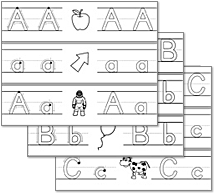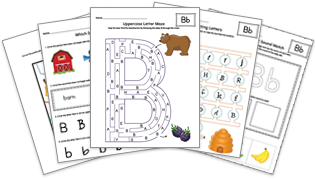
Creating an enjoyable learning environment in your home or classroom promotes higher levels of engagement, focus, and retention allowing for greater individual progress alongside the development of a meaningful child-teacher relationship. Set your child up to succeed and thrive with the following tips:
- Know your child
Structure lessons based on your child's individualized preferences with consideration of likes and dislikes. Teachers in a traditional classroom may need to diversify their lessons into a variety of workstations to accommodate a larger number of children.
- Positive attitude
Your words and attitude help determine your child's receptiveness and whether or not they enjoy lesson time. The more you enjoy teaching, the more your child will enjoy learning.
- Laugh with them
Children love to laugh and mimic you regardless of their understanding for the reason of your laughter. Stimulate their desire to laugh and smile during lesson time to keep their mindset engaged, voluntary and energized.
- Play music and sounds
The use of dancing, singing and playing instruments elevates the learning experience allowing your child to participate with multiple senses at one time and, therefore, integrating a more broad comprehension base.
- Create Interactive activities
Flashcards and games engage your child's attention and boost their motivation to learn while providing opportunities for rewards in problem solving and collaboration skills.
- Participate in the lessons
Children's development improves when teachers follow a child's lead to provide appropriate responses. Adapt your responses in ways that encourage continued learning that match your child's capabilities and interests.
- Use stories to teach
Reading stories to children are motivating and fun while helping develop their social, emotional and behavioral skills. Don't be alarmed if they continue asking to hear the same story many times over and over. Learning comes through repetition and studies have shown that retaining the meaning of new words comes through hearing the same story versus hearing a different story with the same words.
- Make learning practical
Explanation of lesson materials and the "why" behind each activity provides specific insight and understanding to help engage your child with assimilation and application within their daily experiences.
- Provide diversity in your lessons
While maintaining a consistent lesson structure is critical to building patterns of expectation for your child, the introduction of new activities and lessons increases their desire to participate with a sense of discovery, curiosity, and anticipation.





